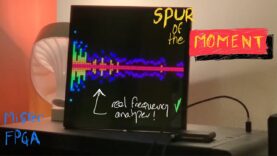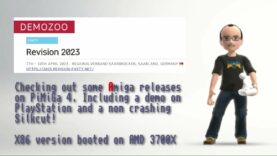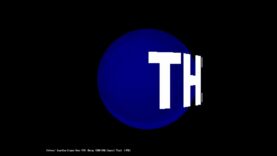Amiga Demo ‘Dragon Guardian’ by Kefrens in 1991 (A1200)(4Gb Compact Flash IDE)(PAL)
Lactobacillus Prime
#Amiga1200 #Escom #demoscene
The Amiga Demo called “Dragon Guardian” by Kefrens saw the light of day in 1991.
The Amiga demo scene was but actually still is a vibrant and creative subculture of computer enthusiasts who pushed the limits of the Amiga,
a family of personal computers sold by Commodore in the 1980s and 1990s. They made stunning digital art, music, and animations using clever
programming tricks and techniques, often in a friendly competition with other groups. They released their works as demos, intros, cracktros, and diskmags, which were distributed on floppy disks, BBS, or the internet.
The Amiga demo scene was influenced by the cracking scene, which removed copy protection from games and added their own intros or cracktros to show off their skills. Some of the most famous cracking
groups were Fairlight, Paradox, and Skid Row. The demo scene also borrowed elements from the music scene, such as trackers, which allowed composers to create complex tunes using samples and patterns. Some of the most popular trackers were Protracker, OctaMED, and FastTracker.
The Amiga demo scene reached its peak in the early1990s, when many legendary demos were released, such as “State of the Art” by Spaceballs,
“Desert Dream” by Kefrens, “Hardwired” by The Silents and Crionics, and “9 Fingers”by Spaceballs. These demos showcased amazing graphics, sound,
and effects, such as vector balls, copper bars, rotozoomers, and ray tracing. They also featured innovative design, storytelling, and synchronization.
The Amiga demo scene declined in the mid-1990s, as the Amiga market collapsed and many sceners moved to other platforms, such as the PC, the PlayStation, or the internet. However, some loyal Amiga fans continued to produce demos for the old and new models of the Amiga with different chipsets and CPUs, such as the AGA-chipset and the 68040,68050,68060 and PPC CPUs. Some of the most notable demos from this era were “Nexus 7” by Andromeda, “Perfect Circle” by The Black Lotus, and “Starstruck” by the same group.
The Amiga demo scene is still alive today, thanks to the efforts of the old and new generation of sceners, who keep the spirit of the Amiga alive. Not online developing software but also repairing and improving the old machines. Amiga sceners participate in demo parties, such as Revision,
Breakpoint, Evoke and many others where they compete and socialize with other sceners. There are actually new implementations of the Amiga hardware done in hardware, FPGA, but also software emulations.
The sceners have modern tools, such as WinUAE (Amiga Software Emulator), WHDLoad (Tool to install and load amiga games from hard-drive and run software intended for other Amigas), and can user newer
versions of the Amiga Operating System like AmigaOS 3.2, 3.4.1, AmigaOS 4, to run newer Dev-kits and continue to create new demos for the Amiga.
The Amiga demo scene is cool example of human creativity that enables people to squeeze so much wonderful things out of these machines that feels so ‘Today’ that the old ageing systems still feel current.
If you want to learn more about the Amiga demo scene, you can visit websites such as the A.D.A. Amiga Demoscene Archive, pouët.net, and Amiga Scene, where you can find thousands of demos, intros, and diskmags, as well as screenshots, reviews, and comments.
Google is your friend!
There is also a ton of footage you can find on YouTube Enjoy! 
Sources used:
A.D.A. Amiga Demoscene Archive. https://ada.untergrund.net/.
pouët.net :: your online demoscene resource. https://www.pouet.net/.
Amiga demos – Wikipedia. https://en.wikipedia.org/wiki/Amiga_demos.
https://www.lemonamiga.com/links/index.php?genre=11.
wikipedia.org. https://en.wikipedia.org/wiki/Amiga_demos.
The audiotrack: On the Trail – Tigerblood Jewel used in this video was licensed by Epidemic Sound
A1200 ESCOM – AZERTY
Processor:Motorola 68EC020 at 14.32 MHz (NTSC) or 14.18 MHz (PAL);
CPU Accell card, running at 50Mhz
RAM: 2 MB Amiga Chip RAM Upgradeable by a further: 8 MB in the expansion.
PCMCIA: Compact Flash for easy transferring files to PC and back
IDE: Compact Flash 4Gb Adapter
The Dragon Guardian experience on the faster system is the same as on the stock system.
Thanks for watching – LactobacillusPrime
My Facebook:
https://www.facebook.com/LactobacillusPrimeRetroGaming
My Instagram:
https://www.instagram.com/lactobacillus_prime
NOTICE:
“Copyright Disclaimer Under Section 107 of the Copyright Act 1976, allowance is made for “fair use” for purposes such as criticism, comment, news reporting, teaching, scholarship, and research. Fair use is a use permitted by copyright statute that might otherwise be infringing. Non-profit, educational or personal use tips the balance in favor of fair use.”

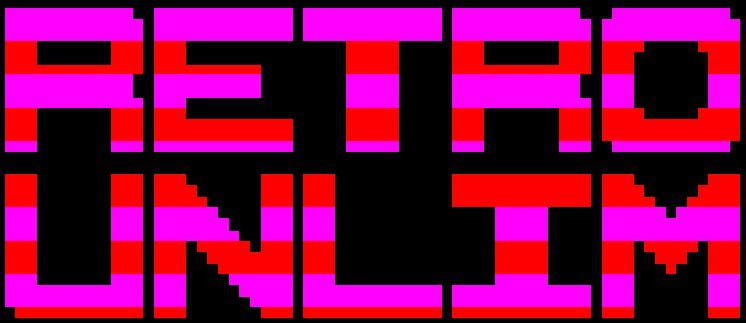

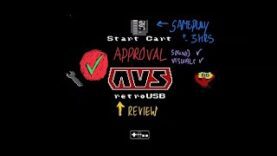
 (720p60)
(720p60) 
